Imagine the delicious aroma and the burst of flavor that curry leaves can bring to your dishes. Now imagine having a healthy, thriving curry leaf plant right in your backyard or on your patio. But wait! To keep your curry leaf plant in top shape and reap the maximum benefits, proper pruning and care are essential. In this blog post, we’ll guide you through the importance of pruning, the best time to do it, the right tools and techniques, and how to prune curry leaf plants effectively.
Not only will you learn how to keep your curry leaf plant healthy, but you’ll also discover some amazing uses for those freshly pruned curry leaves. From enhancing your favorite dishes to boosting your health and beauty regimen, curry leaves are truly versatile and valuable. Ready to get started with learning how to prune curry leaf plants? Let’s dive in!
Short Summary
- Pruning your curry leaf plant is essential for its health and growth.
- With the right tools and techniques, you can encourage bushier growth with pruning, pinching, harvesting & rooting cuttings.
- Enjoy delicious dishes while reaping the nutritional benefits of freshly trimmed curry leaves!
The Importance of Pruning Curry Leaf Plant
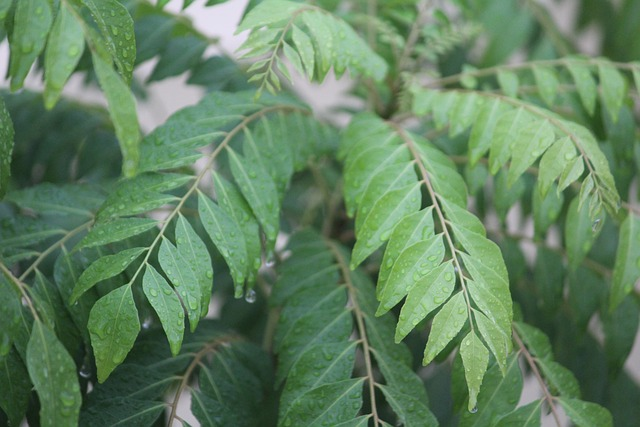
Pruning your curry leaf plant is crucial for various reasons, such as stimulating new growth, maintaining the plant’s health, and managing its size. Think of pruning as a refreshing haircut for your curry leaf plant — it keeps the plant looking its best, encourages growth, and enhances its overall health. For young curry plants, it’s best to wait 6 to 9 months before giving them their first trim.
And the most rewarding outcome of pruning? New, exciting growth that will make your curry leaf plant flourish. Neglecting to prune your curry leaf plant can result in the plant growing tall, requiring new branches to produce fresh leaves. With proper pruning, your plant will not only produce more leaves, but will also become bushier and more attractive.
Encouraging New Growth
Pruning invigorates new growth by activating lateral shoots and branches. To ensure optimal results, it is recommended to remove the top one-third to one-half growth of the curry leaf plant. However, be cautious when watering a young plant after pruning, as overwatering can lead to the risk of root rot.
When pruning, always cut the branches just above healthy, strong buds for optimal results. To protect the cut part, cover it with enamel paint until the cut parts are completely filled, ensuring maximum protection.
By following these steps, you’ll see an increase in lateral branches and new growth in just a few weeks.
Maintaining Plant Health
Pruning your young curry leaf plant ensures its overall health by eliminating dead parts and crossed branches. Removing criss-cross branches from a plant encourages better air circulation. It also minimizes the chance of bug infestation.
To keep the roots of your curry leaf plant healthy after pruning, pay close attention to them and ensure they remain safe and undamaged. Additionally, apply a mixture of compost and blood meal to the soil after pruning, mixing it well with the soil and lightly soaking it while irrigating it regularly for optimal results.
Controlling Your Curry Leaf Plant Size
Pruning can help you keep the size of your curry leaf plant under control, especially if you’re growing it in a pot in a non-tropical area. By promoting branching and bushiness, as well as preventing legginess, pruning maintains the plant in great condition and stops it from becoming too bushy.
When to Prune Your Curry Leaf Plant
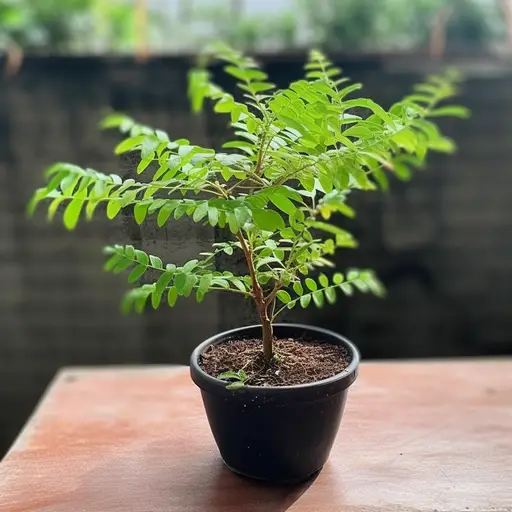
The curry leaf plant should be pruned during its flourishing season. This is generally from early spring to early fall. To ensure the best pruning for your curry leaf plant, make sure to avoid winter trimming and wait two to three weeks before pruning a recently transplanted plant. Pruning in late winter or early spring (March-April) is ideal for optimal growth. This timing helps the plant heal and grow faster as warmer weather stimulates growth.
By pruning your curry plant during the optimal time, you’ll ensure its health and growth. Remember, proper timing is key to a successful pruning experience, so always be mindful of the season and the plant’s condition before you start trimming!
Avoiding Late Fall and Winter Pruning
By avoiding pruning in late fall and winter, you can ensure the plant remains healthy and new growth is not compromised. Pruning during these colder months can shock the plant, resulting in stunted growth and weakened branches.
Moreover, it can damage new growth, as the plant is not able to heal itself properly in colder temperatures. So, always be aware of these risks before you start pruning.
Pruning After Transplanting
Allow two to three weeks to pass before pruning your newly transplanted plant to guarantee successful pruning. Pruning a curry leaf plant after transplanting can help to invigorate its health, stop it from becoming too bushy or leggy, and promote bushier growth.
Remember, patience is essential, and waiting for the right time to prune will yield the best results.
Tools and Techniques for Pruning Curry Leaf Plants
To give your curry leaf plant a healthy prune, you’ll need the right tools and techniques. Use medium-sized gardening shears for the task. Always use clean and sharp cutting implements for the best results.
Following the right tools and techniques will ensure a successful pruning experience and a thriving curry leaf plant.
Selecting the Right Tools
To ensure your curry leaf plant is pruned to perfection, you’ll need pruning shears, and possibly larger pruning tools depending on the size of the plant. Using sharp cutting tools when pruning a curry leaf plant is advantageous, as they make a precise cut, thus helping to protect the plant from any harm.
Proper Pruning Technique
For optimal results, try removing dead leaves by snapping them off from the stem, cutting off dead or diseased branches, and trimming one-third to one-half of the growth. When your plant is at least 12 inches tall, it’s the perfect time to start pruning.
Using clean, sharp pruning shears or scissors to make diagonal cuts about 3-4 inches from the top is an effective way to promote bushier growth. You can also try pinching off the top leaves for a similar effect.
By following these techniques, your curry leaf plant will grow strong, bushy, and healthy.
Fertilizing and Caring for Your Pruned Curry Leaf Plant
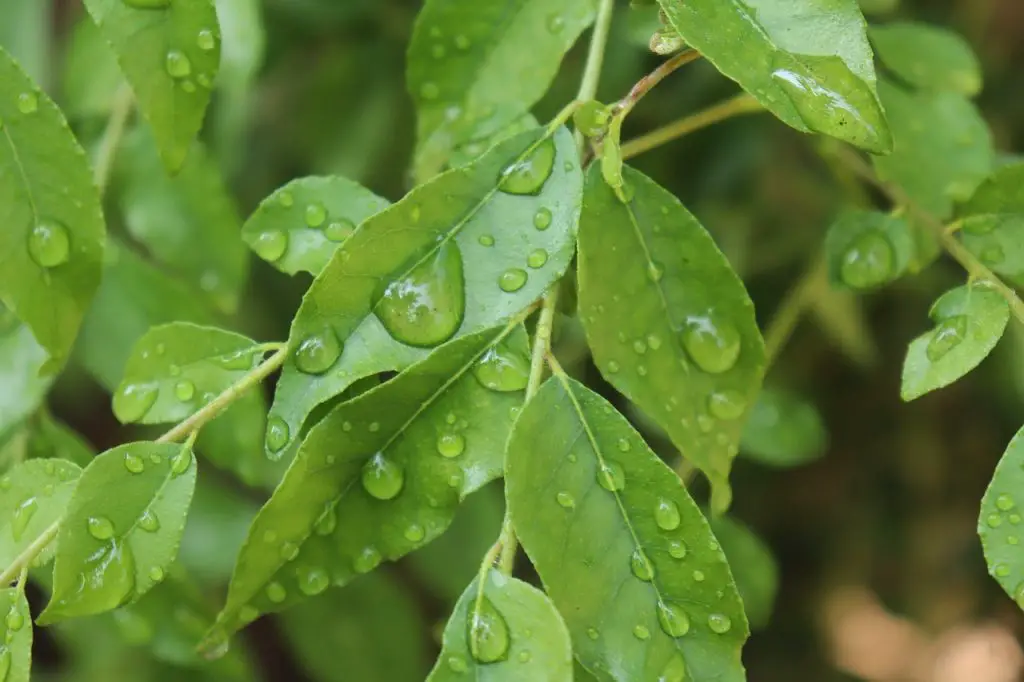
After pruning your curry leaf plant, it’s important to provide it with the proper care and nutrients to ensure it thrives. From applying fertilizer to reducing watering and growing it in the right environment, your curry leaf plant will flourish with the right attention. Check out my article if you need help figuring out the best fertilizer for your curry leaf plant.
Applying Fertilizer
A balanced fertilizer that contains nitrogen, phosphorus, and potassium is the best choice for your curry leaf plant. To ensure your plant is getting the nutrients it needs, fertilize monthly during the growing season. If you’re looking for something more natural, try homemade fertilizers like buttermilk, rice water, asafoetida, wood ash, banana peel, and eggshells, applied weekly.
For the best results, apply fertilizer to young curry plants at the rim of the pot and to in-ground plants at the canopy every 3-4 weeks with liquid fertilizer. Additionally, use iron sulfate or chelate every 4-5 weeks for healthy foliage, and give Epsom salt dissolved in water every 3 months.
Curry Leaf Plant Care Tips
Plant care tips include reducing watering after pruning, growing your curry leaf plant in full sunlight, and ensuring temperatures are around or above 65F. By following these tips, your pruned curry leaf plant will thrive and produce an abundance of fragrant leaves for you to enjoy.
How To Make Curry Leaves Plant Bushy
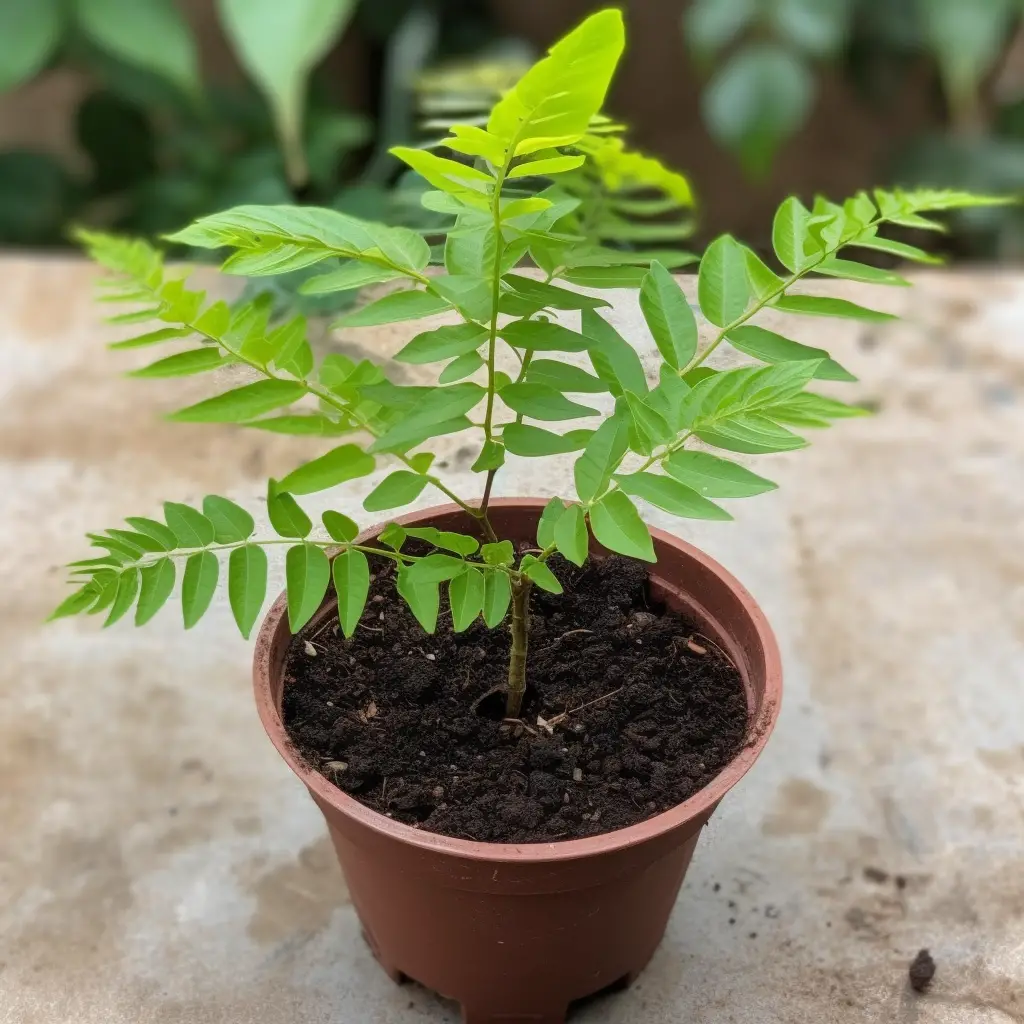
Pruning the tip of the branch encourages new growth from the sides, making the plant bushier. By following proper pruning techniques and caring for your plant, you’ll enjoy a lush, bushy curry leaf plant that will provide you with an abundance of flavorful and aromatic leaves.
Pruning Tips for Bushier Curry Leaf Growth
Pruning encourages the growth of lateral shoots and new branches, making the plant bushier. Start by removing old leaves, and then make a clean diagonal cut at least 1/3 of the plant from the top. This will help it thrive. By following these steps, you’ll see an increase in lateral branches and new growth in just a few weeks.
In addition to pruning, pinching off the top leaves is a great way to get your plant to shoot out new side branches. This natural approach promotes bushier growth and helps your curry leaf plant reach its full potential.
Additional Methods
Aside from pruning, there are other methods for making your curry leaf plant bushier. Pinching branch tips, harvesting top leaves, and rooting cuttings are all effective ways to encourage bushier growth.
By utilizing these methods along with proper pruning, your curry leaf plant will flourish with lush, bushy foliage.
Using Curry Leaves After Pruning
Freshly pruned curry leaves offer a wealth of culinary, health, and beauty benefits. From adding flavor to your favorite dishes to boosting your health and beauty regimen, let’s explore the many ways you can use curry leaves after pruning.
Curry leaves are a great addition to any dish, adding a unique flavor and aroma. They can be used in curries, soups, stews, and even salads.
Culinary Uses
Freshly trimmed curry leaves can be used in a variety of exciting ways in the kitchen. Add them to Indian and Thai dishes to enhance the flavor, such as frying them in oil and adding them to soups, curries, and stir-fries. You can also stew or roast curry leaves and use them in sauces for a truly unique taste.
Curry leaves have many uses in the kitchen. They can be used to make delicious chutneys and tea. Blend curry leaves with other ingredients such as coconut, tamarind, and spices to make a mouth-watering chutney. For a soothing cup of tea, simply boil curry leaves in water. The possibilities are endless!
Health and Beauty Benefits
Curry leaves are packed with vitamins A and C, antioxidants, and minerals that aid in digestion and reduce inflammation. These natural powerhouses can help with weight loss, reduce bad cholesterol, and support heart health.
In addition to their health benefits, curry leaves offer a wealth of beauty benefits. They can help clear acne, act as an exfoliant, and be used as a face or hair mask, body scrub, skin protector, and even reduce wrinkles. With so many health and beauty benefits, it’s no wonder that curry leaves are a popular ingredient in both the kitchen and the beauty cabinet.
Happy Pruning
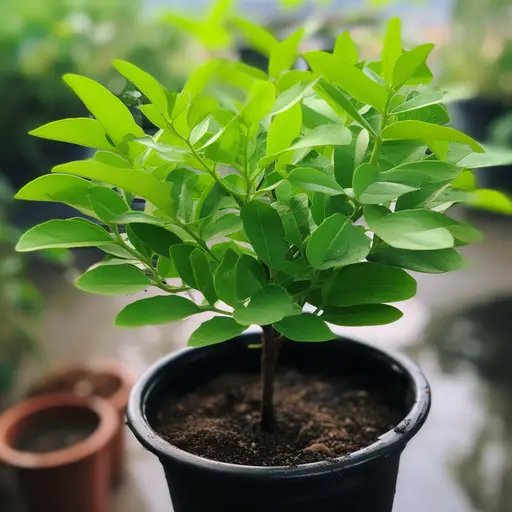
Pruning your curry leaf plant is essential for encouraging new growth, maintaining plant health, and controlling its size. By following the proper pruning techniques, using the right tools, and caring for your plant after pruning, you’ll enjoy a lush, bushy curry leaf plant that will provide you with an abundance of flavorful and aromatic leaves.
So, what are you waiting for? Grab your pruning shears, and give your curry leaf plant the care it needs to thrive. With every snip and trim, you’ll be on your way to enjoying the incredible culinary, health, and beauty benefits that curry leaves offer. Happy pruning!
Frequently Asked Questions
When should you prune curry leaf plant?
It’s time to start pruning your curry leaf plant when it’s about six months old and has formed six or more branches with several developed leaves on each. Give the plant a little care and attention by trimming two of the branches back to encourage bushier growth – it will make a big difference to the health of your plant.
How do I get more leaves on my curry leaf plant?
To get more leaves on your curry leaf plant, ensure that it is planted in well-drained soil and is provided full sun or shade during the heat of the day in hot regions. Fertilize regularly, water moderately and avoid oversaturating the soil. Finally, consider pruning to encourage multiple branches and more leaves.

David, the founder of The Garden Fixer, started with a passion for gardening in 2012. He has continued his passion for gardening and desire to improve his skills and wanted to share his journey and helpful knowledge with other like-minded individuals.
He launched The Garden Fixer as an outlet for those interested in learning more about Gardening in hopes they can take what they learn and apply it for themselves!
